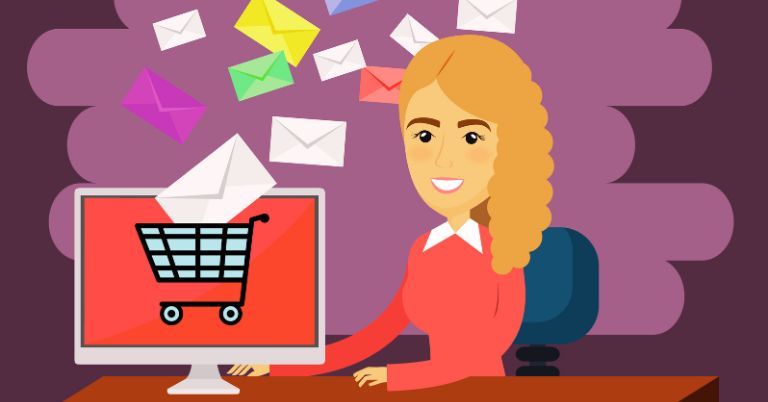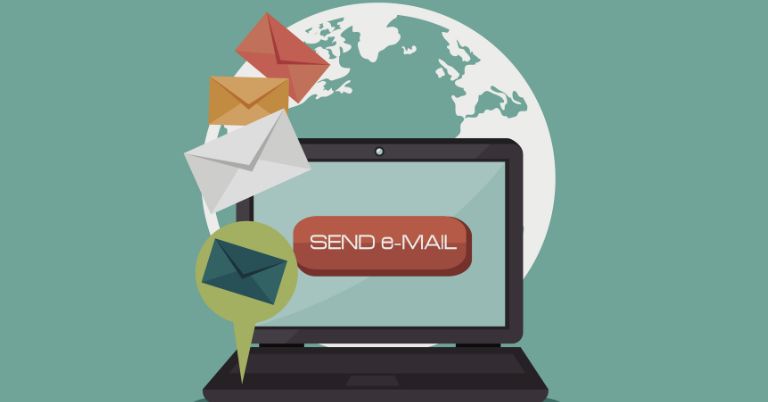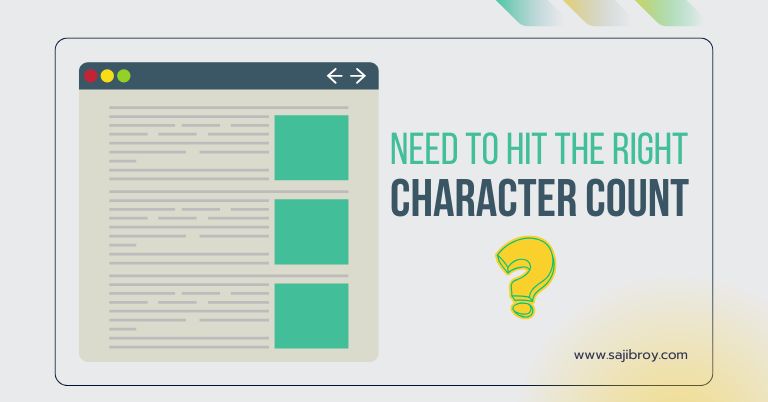To improve e-mail marketing campaigns, focus on segmentation and personalization for better targeting to increase open rates, click-through rates, and conversions. In today’s digital landscape, e-mail marketing remains a valuable tool to reach and engage with customers.
However, simply sending out mass e-mails to your entire list is no longer enough to achieve optimal results. To effectively leverage e-mail marketing, you need to refine your strategies and make them more personalized and targeted. This means segmenting your subscribers based on their demographics, interests, or behavior, and tailoring your e-mails accordingly.
By doing so, you can deliver relevant content to the right audience, resulting in higher engagement and ultimately better campaign performance. We will discuss some key steps you can take to improve your e-mail marketing campaigns and maximize their effectiveness.
Let's See the Topic Overview
Understanding The Importance Of E-mail Marketing
Improve your e-mail marketing campaigns by understanding their importance in reaching your target audience effectively. Enhance engagement, increase conversion rates, and boost brand awareness through optimized e-mail strategies.
Email marketing is a powerful tool that can greatly enhance your marketing campaigns and help you connect with your audience in a more personalized and effective way. In this section, we will explore the importance of email marketing and the benefits it can bring to your business growth.
Benefits Of Email Marketing:
- Increased reach: With email marketing, you can reach a large number of potential customers directly in their inbox. This enables you to connect with a wider audience and engage them with your brand message.
- Cost-effective: Compared to other marketing channels, email marketing is a cost-effective strategy. It does not require a significant investment and can generate a high return on investment (ROI) when executed correctly.
- Targeted approach: One of the biggest advantages of email marketing is its ability to target specific segments of your audience. By segmenting your email list based on demographics, interests, or previous interactions, you can tailor your messages to resonate with each group more effectively.
- Personalization: Email marketing allows you to deliver personalized content and offers to your subscribers. By addressing individuals by their names and delivering content that is relevant to their interests and preferences, you can create a more meaningful connection with your audience.
The Role Of Email Marketing In Business Growth:
- Building customer relationships: Email marketing helps you cultivate a long-term relationship with your customers. By consistently delivering valuable content, updates, and offers, you can establish trust and loyalty, leading to repeat business and customer retention.
- Driving conversions: Emails are a powerful way to drive conversions and sales. By including compelling calls-to-action (CTAs) and offering exclusive promotions, you can encourage your subscribers to take action and make a purchase.
- Brand awareness: Regularly sending emails keeps your brand top-of-mind for your subscribers. It reinforces your brand identity and helps to build awareness among your target audience. This can result in increased brand recognition and more opportunities for your business.
- Data-driven insights: Email marketing provides valuable insights into your audience’s behavior and preferences. Tracking metrics such as open rates, click-through rates, and conversions can help you analyze the effectiveness of your campaigns and make data-driven decisions for future improvements.
Email marketing plays a crucial role in business growth by allowing you to expand your reach, engage with your audience in a targeted and personalized manner, build customer relationships, and drive conversions. With its cost-effective nature and ability to provide valuable insights, email marketing should be an essential component of your overall marketing strategy.
Optimizing Your E-Mail Marketing Strategy
Improve your e-mail marketing campaigns by optimizing your strategy. Enhance customer engagement and conversion rates with targeted content, personalized subject lines, and effective call-to-action buttons.

To improve your e-mail marketing campaigns, it is crucial to optimize your overall strategy. This involves defining clear goals for your campaign, building an engaged and segmented email list, and crafting attention-grabbing subject lines and preheaders. By implementing these steps, you can enhance the effectiveness of your e-mail marketing efforts and achieve better results.
Defining Clear Goals For Your Campaign:
Defining clear goals for your e-mail marketing campaign is essential for success. Without clear objectives, you will lack direction and may not achieve the desired outcomes. Here are some key points to consider when setting goals:
- Identify your target audience: Understand who your target audience is and what you want to achieve with your e-mail marketing campaign.
- Set measurable goals: It is important to set goals that can be measured, such as increasing open rates, click-through rates, or conversion rates. This will help you track the effectiveness of your campaign.
- Align with your overall marketing strategy: Ensure that your e-mail marketing goals are aligned with your overall marketing strategy to maintain consistency and maximize impact.
Remember, setting clear, specific, and achievable goals will provide you with a solid foundation for optimizing your e-mail marketing strategy.
Building An Engaged And Segmented Email List:
Building an engaged and segmented email list is crucial for effective e-mail marketing. By targeting the right audience and delivering relevant content, you can increase engagement and conversions. Consider the following steps:
- Capture leads through various channels: Implement lead capture forms on your website, blog, social media platforms, and other relevant touchpoints to attract potential subscribers.
- Offer incentives: Provide valuable incentives, such as exclusive content, discounts, or freebies, to encourage visitors to subscribe to your e-mail list.
- Segment your subscribers: Categorize your subscribers based on their demographics, preferences, or behavior. This will enable you to tailor your content and offers to their specific needs, increasing the likelihood of engagement.
Building an engaged and segmented email list will allow you to deliver personalized content that resonates with your subscribers, leading to improved campaign performance.
Crafting Attention-Grabbing Subject Lines And Preheaders:
The subject line and preheader play a crucial role in convincing recipients to open your e-mails. To ensure your e-mails stand out in crowded inboxes, consider the following tips:
- Keep it concise and compelling: Use concise language that creates a sense of urgency or curiosity. Grab the reader’s attention with a clear and compelling message.
- Personalize when possible: Incorporate personalized elements like the recipient’s name or location to increase relevance and engagement.
- Test and optimize: Experiment with different subject lines and preheaders to see what resonates best with your audience. Analyze open rates and adjust your strategy accordingly.
Crafting attention-grabbing subject lines and preheaders will entice recipients to open your e-mails and increase the chances of achieving your e-mail marketing goals.
Remember, optimizing your e-mail marketing strategy is an ongoing process. Continuously monitor and analyze the performance of your campaigns, and make data-driven adjustments to improve results. By defining clear goals, building an engaged email list, and crafting attention-grabbing subject lines and preheaders, you can achieve better outcomes and maximize the impact of your e-mail marketing efforts.
Personalizing Your E-Mail Content
Improving your email marketing campaigns involves personalizing your email content. By tailoring your messages to the specific needs and preferences of your audience, you can increase engagement, and click-through rates, and ultimately drive conversions.
The Power Of Personalized E-Mail Marketing
E-mail marketing campaigns have become an integral part of any successful digital marketing strategy. However, with the ever-increasing amount of promotional content flooding our inboxes, it’s essential to find a way to stand out from the crowd. One effective strategy is personalizing your e-mail content.
Personalization helps you build a stronger connection with your audience, increase engagement, and ultimately drive better results for your campaign.
Utilizing Customer Data To Create Targeted Content:
Segmentation:
- Categorize your subscriber list based on specific criteria such as demographics, past purchase behavior, or interests.
- Tailor your e-mail content to address the unique needs and preferences of each segment.
- Improve relevancy and increase the likelihood of conversions.
Dynamic Content:
- Use customer data to dynamically generate personalized content within your e-mails.
- Display product recommendations based on browsing or purchase history.
- Include personalized greetings, such as the recipient’s name.
Behavioral Triggers:
- Set up automated triggers based on customer actions, such as cart abandonment.
- Send follow-up e-mails with personalized offers or reminders to encourage conversions.
- Respond promptly to customer behavior and deliver targeted content at the right time.
Customized Subject Lines:
- Craft personalized subject lines that grab attention and entice recipients to open your e-mails.
- Include the recipient’s name or reference past interactions to create a sense of familiarity.
- Experiment with different tactics to find what resonates best with your audience.
A/B Testing:
- Test different variations of personalized content, subject lines, or designs to identify what works best.
- Analyze data and make data-driven decisions to refine your e-mail marketing strategies.
- Continuously optimize your campaigns to achieve better results over time.
By personalizing your e-mail content, you can create a more personalized and engaging experience for your subscribers. Utilizing customer data allows you to deliver targeted content that resonates with their needs and preferences. With increased relevance and engagement, you’ll see better open rates, click-through rates, and overall campaign performance.
Start personalizing your e-mail marketing campaigns today to reap the benefits of this powerful strategy.
Crafting Compelling E-Mail Designs
Discover effective strategies to enhance your e-mail marketing campaigns by crafting compelling e-mail designs. Elevate engagement and conversions by implementing captivating visuals, concise content, and personalized messaging. Boost success rates and connect with your audience on a deeper level through optimized e-mail designs.
Choosing The Right Email Template
Crafting compelling email designs is essential to grab the attention of your audience and ensure your message stands out in their inbox. To help you improve your email marketing campaigns, here are some tips for choosing the right email template:
- Consider the purpose of your email: Whether you’re sending a promotional offer, a newsletter, or an event invitation, it’s crucial to select a template that aligns with your goals and effectively conveys your message.
- Responsive design: With the increasing number of people accessing emails on mobile devices, it’s essential to choose a template that is responsive and adjusts well to different screen sizes. This ensures that your emails are easily readable and visually appealing on any device.
- Customizability: Look for a template that allows you to customize various elements such as colors, fonts, and layouts. This enables you to create a unique design that reflects your brand identity and resonates with your target audience.
- Consistency with your brand: Your email template should be consistent with your overall brand aesthetic, leveraging your brand colors, logo, and visual elements. This consistency helps to build recognition and trust among your recipients.
- Consider readability: Opt for a template that prioritizes readability by having a clear hierarchy of content, using legible fonts, and providing ample white space. Avoid cluttered designs that can overwhelm your readers and make it difficult for them to understand your message.
- Simplicity is key: While it’s important to make your emails visually appealing, simplicity should be at the core of your design. Clean and minimalistic designs often perform better as they are less distracting and allow your content to shine.
- Balance visuals and text: Visual elements such as images and graphics can enhance the visual impact of your emails, but they should complement the text rather than overpower it. Ensure that your visuals are relevant and high-quality, and help to convey your message effectively.
- A/B testing: Try different templates and designs to see which ones perform better in terms of open rates, click-through rates, and conversions. A/B testing allows you to gather data and make data-driven decisions to optimize your email design.
- Mobile preview: Before finalizing your email template, make sure to preview it on different devices and email clients. This will give you a clear understanding of how your design will appear to recipients and any necessary adjustments that need to be made.
- Keep it professional: Regardless of the design you choose, it’s essential to maintain a professional appearance. Avoid using overly flashy or gimmicky designs that may come across as unprofessional. Focus on creating a design that is visually pleasing, engaging, and represents your brand well.
By following these tips and selecting the right email template, you can create compelling email designs that captivate your audience and improve the effectiveness of your email marketing campaigns.
Implementing Effective Call-To-Actions
Improve your email marketing campaigns by implementing effective call-to-actions that prompt readers to take desired actions. Optimize your CTA placements, use compelling and action-oriented language, and make them visually appealing to increase click-through rates and overall campaign success.
Strategies For Creating Effective Ctas
Implementing effective call-to-actions (CTAs) is crucial for improving the performance of your email marketing campaigns. A call-to-action is what drives your subscribers to take action, whether it’s making a purchase, signing up for a webinar, or downloading an e-book. Here are some strategies to help you create compelling CTAs that generate clicks and conversions:
- Use action-oriented language: Your CTAs should be clear and direct, inspiring users to take immediate action. Incorporate strong action verbs like “Buy Now,” “Book Your Spot,” or “Learn More” to prompt engagement.
- Keep it concise: CTAs should be concise and to the point. Aim for a word count of 2-5 words to ensure clarity and avoid overwhelming your readers.
- Create a sense of urgency: People are more likely to respond to CTAs when they feel a sense of urgency. Incorporate words like “Limited Time Offer,” “Only 24 Hours Left,” or “Don’t Miss Out” to create a fear of missing out (FOMO) effect.
- Highlight benefits: Clearly communicate the benefits of taking action and what your subscribers can expect by clicking on the CTA. Whether it’s a discount, valuable information, or exclusive access, make sure your CTA delivers value.
- Use contrasting colors and design: Make your CTAs stand out by using contrasting colors that catch the eye. This will draw attention to the CTA and make it easier for users to spot.
- Test different placements: Experiment with different placements for your CTAs within your email. Try placing them at the top, middle, or end of your content to find out which placement generates the most clicks.
- Personalize your CTAs: Tailor your CTAs to the specific needs and interests of your target audience. Use segmentation and personalization techniques to create more relevant and targeted CTAs that resonate with your subscribers.
- Optimize for mobile devices: As more people access their emails on mobile devices, it’s essential to optimize your CTAs for mobile responsiveness. Ensure that your CTAs are easily clickable and visible on smaller screens.
- Track and analyze performance: Regularly monitor the performance of your CTAs to see what’s working and what needs improvement. Use analytics tools to track metrics like click-through rates (CTRs) and conversion rates to optimize your CTAs over time.
By implementing these strategies, you can create effective CTAs that drive engagement and maximize the impact of your email marketing campaigns. Remember to continuously test and optimize your CTAs to ensure that they resonate with your target audience and deliver desired results.
Increasing E-Mail Deliverability
Improve your e-mail marketing campaigns by enhancing e-mail deliverability. Discover effective techniques to boost open rates and reach your target audience more effectively.

E-mail deliverability plays a crucial role in the success of your e-mail marketing campaigns. After all, if your e-mails are not reaching your recipients’ inboxes, your efforts will go to waste. Here are some key strategies to increase e-mail deliverability:
Avoiding common spam-trigger words and phrases:
- Utilize email spam filter analysis tools to identify common trigger words.
- Refrain from using phrases such as “free,” “limited time offer,” or “urgent” in your subject lines or content.
- Instead, focus on creating compelling, personalized subject lines that entice readers and are less likely to trigger spam filters.
Optimizing your sender reputation and authentication:
- Establish a good sender reputation by consistently sending relevant and valuable content to your recipients.
- Authenticate your e-mails using SPF (Sender Policy Framework), DKIM (DomainKeys Identified Mail), and DMARC (Domain-based Message Authentication, Reporting, and Conformance) protocols.
- Regularly monitor your sender reputation using tools like Sender Score or Postmaster Tools to identify and address any deliverability issues promptly.
Remember, to ensure successful e-mail deliverability, it is crucial to strike a balance between engaging content and adhering to best practices. By avoiding spam-trigger words and optimizing your sender reputation and authentication, you can enhance the effectiveness of your e-mail marketing campaigns.
Analyzing And Optimizing Campaign Performance
Improve the effectiveness of your e-mail marketing campaigns through comprehensive analysis and optimization. Enhance performance by analyzing data, testing different strategies, and making data-driven decisions. Optimize your campaigns to increase open rates, click-through rates, and overall engagement for impactful results.
To run successful email marketing campaigns, it is crucial to not only send out emails but also analyze and optimize their performance. By tracking key metrics and conducting A/B testing, you can gain insights into how your campaigns are performing and make necessary improvements.
In this section, we will explore the metrics to track email marketing success and how A/B testing can help evaluate campaign performance.
Metrics To Track For Email Marketing Success:
- Open Rate: This metric measures the percentage of recipients who open your emails. A high open rate indicates that your subject lines are enticing and your emails are reaching your audience effectively.
- Click-through Rate (CTR): CTR indicates the percentage of recipients who click on links within your emails. Monitoring this metric helps determine the effectiveness of your content and call-to-action (CTA).
- Conversion Rate: The conversion rate tracks the percentage of recipients who complete the desired action, such as making a purchase or signing up for a newsletter. It demonstrates the effectiveness of your email content and overall campaign.
- Bounce Rate: Bounce rate measures the percentage of emails that were not successfully delivered to recipients’ inboxes. A high bounce rate could indicate issues with your email lists or delivery methods.
- Unsubscribe Rate: This metric indicates the percentage of recipients who unsubscribe from your emails. Monitoring this rate helps you understand if your content or frequency is not resonating with your audience.
A/B Testing And Evaluating Campaign Performance:
A/B testing involves creating two variations of an email campaign to understand which performs better in terms of engagement and conversion. By conducting A/B tests, you can optimize your campaigns and achieve better results. Here are some steps to follow when evaluating campaign performance through A/B testing:
- Define your objective: Determine the specific goal you want to achieve with your A/B test, whether it’s improving open rates, click-through rates, or conversions.
- Identify variables to test: Choose the elements of your email campaign that you want to test, such as subject lines, content layout, visuals, or CTAs.
- Divide your audience: Split your audience into two groups, with each receiving a different variation of the email.
- Measure and compare: Monitor the performance of each variation by tracking the relevant metrics like open rates, click-through rates, and conversions.
- Analyze the results: Compare the performance of the two variations to determine the more successful one. Identify patterns and insights that can be used to optimize future campaigns.
- Implement improvements: Apply the learnings from your A/B test to make necessary adjustments to future email campaigns, focusing on the aspects that contributed to higher engagement and conversions.
By regularly analyzing your email campaign metrics and conducting A/B tests, you can gain valuable insights about your audience and optimize your campaigns for better performance and results.
Automation And Segmentation Strategies
Improve your e-mail marketing campaigns with effective automation and segmentation strategies for targeted messaging, increased engagement, and higher conversion rates.
Leveraging Automation To Streamline Campaigns
Automation is a game-changer when it comes to improving your email marketing campaigns. By implementing automation strategies, you can streamline your efforts, save time, and see better results. Here are some key ways you can leverage automation to take your campaigns to the next level:
- Drip campaigns: Set up automated email sequences to nurture your leads and guide them through the customer journey. By sending targeted and timely emails based on user actions or behavior, you can keep your audience engaged and move them closer to conversion.
- Welcome emails: Make a great first impression with automated welcome emails. These messages can be triggered when someone signs up for your email list or makes their first purchase. Use this opportunity to introduce your brand, showcase your value proposition, and provide any necessary onboarding information.
- Abandoned cart reminders: Did you know that around 70% of online shopping carts are abandoned? Use automation to send friendly reminders to those who haven’t completed their purchase. By offering incentives or addressing any concerns they may have, you can recover potentially lost sales.
- Personalized content: With automation tools, you can segment your audience and deliver highly relevant content. By tailoring your emails to specific customer segments based on their demographics, purchase history, or interests, you can increase engagement and conversion rates.
- Behavior-based triggers: Set up triggers based on user behavior to send timely and personalized emails. For example, if a subscriber hasn’t engaged with your emails for a while, you can automatically send them a re-engagement campaign. This helps you maintain a clean and engaged email list.
- Automated reporting: Save time and gain valuable insights by setting up automated reports. Track essential metrics like open rates, click-through rates, and conversions, so you can make data-driven decisions and optimize your campaigns for better results.
Segmenting Your Audience For Personalized Messaging
Segmentation is the key to delivering personalized messaging that resonates with your subscribers. By dividing your email list into smaller segments based on specific criteria, you can ensure that each subscriber receives content that is relevant and valuable to them.
Here’s how segmenting your audience can enhance your email marketing campaigns:
- Demographic segmentation: Divide your audience based on demographic data such as age, gender, location, or job title. This allows you to tailor your content to specific groups and address their unique needs and preferences.
- Behavioral segmentation: Analyze user behavior data to create segments based on actions such as purchase history, website browsing activity, or email engagement. This enables you to send targeted emails that align with their interests and intentions.
- Lifecycle stage segmentation: Categorize your subscribers based on where they are in the customer journey. Are they new leads, first-time buyers, or loyal customers? By understanding their stage, you can send emails that are appropriate and meaningful in their current context.
- Preference-based segmentation: Give your subscribers the ability to choose the types of emails they want to receive. Allow them to opt in or opt out of specific categories of content. This helps you send them information that aligns with their preferences, increasing engagement and reducing unsubscribes.
- Personalized recommendations: Leverage data on individual preferences, purchase history, or browsing behavior to provide personalized product recommendations. By suggesting items that match their interests, you can boost conversions and customer satisfaction.
Segmentation and automation go hand in hand, enabling you to deliver the right message to the right people at the right time. Implement these strategies and take your email marketing campaigns to new heights.
Building Trust And Engagement
Improve your e-mail marketing campaigns by focusing on building trust and engagement. Strengthen connections with your audience through personalized content, clear calls to action, and regular communication. By establishing credibility and creating meaningful interactions, you can enhance the effectiveness of your e-mail campaigns.
The success of your email marketing campaigns depends on your ability to build trust and engagement with your subscribers. By developing strong relationships and encouraging interaction, you can maximize the effectiveness of your email marketing efforts. Here are some strategies to help you achieve this:
Developing Strong Relationships With Your Subscribers:
- Personalize your emails: Tailor your content to cater to the individual needs and interests of your subscribers. Use their names in the subject lines and throughout the email to make it feel more intimate and personalized.
- Segment your email list: Dividing your subscribers into specific groups based on their demographics or behavior allows you to send targeted and relevant content. This shows that you understand your subscribers’ preferences and helps build a deeper connection.
- Provide valuable and relevant content: Share informative and helpful content that is of interest to your subscribers. By providing value, you establish yourself as an authoritative source and gain their trust.
- Show appreciation: Express gratitude to your subscribers for being a part of your community. Offer exclusive discounts or rewards to show that you value their loyalty.
Encouraging Interaction And Feedback:
- Include clear call-to-action (CTA): Clearly communicate what you want your subscribers to do, whether it’s making a purchase, subscribing to a newsletter, or sharing their opinions. Use compelling and action-oriented language to prompt engagement.
- Ask for feedback: Encourage your subscribers to provide feedback on your emails or products/services. This not only shows that you value their opinions but also provides you with valuable insights for improvement.
- Engage with social media: Integrate social media buttons into your emails to encourage subscribers to share your content or follow your brand on different platforms. This extends the reach of your campaigns and fosters a sense of community.
- Respond promptly: When subscribers engage with your emails or provide feedback, respond in a timely manner. This shows that you genuinely care about their thoughts and are attentive to their needs.
Remember, building trust and engagement with your email subscribers is an ongoing process. By implementing these strategies, you can cultivate stronger relationships and enhance the effectiveness of your email marketing campaigns.
Step-By-Step Guide To E-Mail Marketing Success
Looking to improve your e-mail marketing campaigns? Check out this step-by-step guide to achieve e-mail marketing success. Learn how to optimize your strategy, engage with subscribers, and boost conversion rates for maximum impact.
Implementing The Best Practices For Successful E-Mail Marketing Campaigns
E-mail marketing is a powerful tool that allows businesses to connect with their target audience and drive conversions. However, without implementing the best practices for successful e-mail marketing campaigns, your efforts may go unnoticed. To ensure the effectiveness of your e-mail marketing initiatives, follow these step-by-step guidelines:

Building A Quality E-Mail List
- Segment your e-mail list based on demographics, interests, or purchase history to deliver targeted messages.
- Use lead generation tactics like pop-ups, content upgrades, and social media campaigns to attract quality subscribers.
- Regularly clean your e-mail list by removing inactive subscribers and those who have unsubscribed.
Writing Engaging Subject Lines
- Craft compelling subject lines that create curiosity, offer value, or prompt urgency.
- Keep subject lines concise and avoid using click-bait tactics to maintain trust with your subscribers.
- A/B tests different subject lines to identify the most effective ones for your audience.
Creating Compelling E-Mail Content
- Personalize your e-mails by addressing subscribers by their names and tailoring the content to their interests.
- Use clear and concise language to convey your message effectively.
- Include a strong call-to-action that encourages subscribers to take the desired action.
Optimizing E-Mail Design And Layout
- Keep your e-mails visually appealing by using a clean and responsive design.
- Use a single-column layout to ensure readability across different devices.
- Include eye-catching visuals, such as images or GIFs, to capture the attention of your subscribers.
Testing And Analyzing Campaign Performance
- A/B tests different e-mail elements, such as subject lines, layouts, and CTAs, to identify what resonates best with your audience.
- Monitor key metrics like open rates, click-through rates, and conversion rates to measure the effectiveness of your campaigns.
- Analyze your e-mail marketing data to gain insights and make data-driven decisions for future campaigns.
Tips And Tricks For Improving Open And Click-Through Rates
Improving open and click-through rates is crucial for the success of your e-mail marketing campaigns. Here are some tips and tricks to help you maximize engagement:
- Personalize your e-mails by addressing subscribers by their names in the subject line or body.
- Use compelling and action-oriented language to create a sense of urgency and encourage clicks.
- Optimize your e-mails for mobile devices to ensure a seamless viewing experience for all subscribers.
- Segment your e-mail list and send targeted content to specific groups based on their interests and preferences.
- Experiment with different layouts, visuals, and CTAs to determine what works best for your audience.
- Craft catchy and concise subject lines that pique curiosity or offer exclusive benefits to entice subscribers to open your e-mails.
- Write engaging and strategic preview text to complement your subject line and provide a sneak peek into the content.
- Test your e-mails across multiple browsers and devices to ensure proper rendering and functionality.
- Regularly analyze your campaign metrics and make data-driven optimizations to continuously improve your results.
- Focus on building a strong brand reputation and providing value to your subscribers to foster trust and loyalty.
By implementing these best practices and incorporating these tips and tricks into your e-mail marketing strategy, you’ll be well on your way to achieving e-mail marketing success. Remember to continuously evaluate and refine your approach based on your audience’s feedback and preferences for optimal results.
Conclusion
Improving your e-mail marketing campaigns requires strategic planning and continuous optimization. By analyzing and segmenting your audience, personalizing your content, and optimizing your design for mobile devices, you can enhance engagement and conversions. Additionally, leveraging data analytics allows you to track and measure the effectiveness of your campaigns, enabling you to make data-driven decisions and refine your approach.
Moreover, staying up to date with the latest industry trends and best practices ensures that you adapt to evolving consumer behaviors and preferences. Remember to constantly test and iterate your strategies to find what works best for your specific audience and goals.
With dedication and a focus on delivering value to your subscribers, you can achieve success in your e-mail marketing efforts. So, start implementing these techniques today and watch your campaigns thrive.












